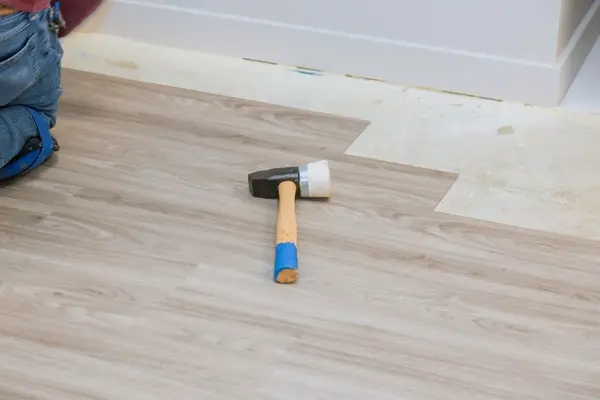Flooring
DIY Linoleum Floor Removal Made Simple

Removing old flooring may sound tough, but DIY linoleum removal becomes easy with the right tools and steps. Linoleum often bonds tightly with adhesive, making the task challenging. However, a little heat, patience, and proper technique will make the job manageable.
Confirm the Flooring Material First
Before starting, confirm that your flooring is actually linoleum and not vinyl. They appear similar but require different removal methods. Look at the thickness and pattern. Vinyl has a printed top layer, while linoleum shows patterns throughout the material.
Next, check if your linoleum contains asbestos. Older floors, especially those installed before 1980, might have asbestos in the backing. Use a home asbestos test kit or hire a professional before proceeding. If the floor tests positive, call licensed contractors. Never attempt to remove asbestos-containing materials yourself.
Gather the Right Tools and Supplies
Proper tools make a huge difference when tackling flooring jobs. Have these items ready:
- Asbestos test kit
- Utility knife
- Floor scraper
- Oscillating multi-tool
- Wallpaper steamer or heat gun
- Isopropyl alcohol or adhesive remover
Each tool serves a specific purpose, so gather them before removing anything.
Step-by-Step Guide to DIY Linoleum Removal
- Step 1: Score the Flooring into Strips
Use a sharp utility knife to cut the linoleum into strips about 6 to 12 inches wide. Work slowly and score lightly. Avoid cutting through to the subfloor. If your linoleum has a tile pattern, use those lines as cutting guides. Scoring the flooring makes it easier to remove in smaller pieces. - Step 2: Remove the Top Layer of Linoleum
Start peeling up the top layer by sliding a scraper under the scored edge. An oscillating multi-tool can also help. Lift gently and peel each strip back slowly. Work in small sections to keep the process controlled and reduce floor damage. - Step 3: Heat and Scrape the Paper Backing
The adhesive and paper layer below the top surface need extra effort. Use a wallpaper steamer or hair dryer to heat the glue. Once the adhesive softens, scrape at a 45-degree angle. Avoid gouging the subfloor beneath. Apply heat and scrape repeatedly in small areas. - Step 4: Use Solvents on Stubborn Glue
Some adhesives resist even heat. In those cases, use isopropyl alcohol or a commercial adhesive remover. Let the solution sit for a few minutes before scraping. Follow the safety instructions on the product label. Continue to heat and scrape until you remove all adhesive traces.
Dispose of Old Linoleum Responsibly
If your linoleum is asbestos-free, you can bag it and place it with regular trash. But eco-friendly disposal options are better. Many local recycling or composting centers accept linoleum. Some homeowners even compost it in backyard systems if it’s made from natural materials.
Tips for a Smoother Process
- Work in small, manageable sections.
- Ask for help if large areas feel overwhelming.
- Always ventilate the room while using solvents.
- Don’t rush—careful work protects your subfloor.
Removing linoleum may test your patience, but careful planning will help. With each strip removed, you’re one step closer to a fresh new floor.
Final Thoughts
DIY linoleum removal is possible for any homeowner with basic tools, preparation, and determination. Always test for asbestos before starting. Use heat, score carefully, and stay patient. Soon, you’ll clear the space and prepare it for a new floor design.
